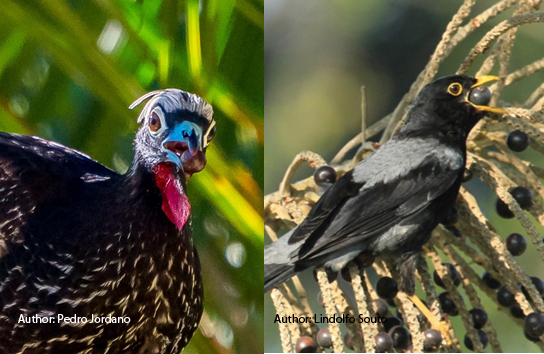Species on Earth are interconnected with each other through ecological interactions. Defaunation can erode those connections, yet we lack evolutionary predictions about the consequences of losing interactions in human-modified ecosystems. Here, the fate of the evolutionary history of avian–seed dispersal interactions across tropical forest fragments is quantified by combining the evolutionary distinctness of the pairwise-partner species, a proxy to their unique functional features. Both large-seeded plant and large-bodied bird species showed the highest evolutionary distinctness. A loss of 3.5 to 4.7 × 104 million years of cumulative evolutionary history of interactions due to defaunation is estimated. Bird-driven local extinctions mainly erode the most evolutionarily distinct interactions. However, the persistence of less evolutionarily distinct bird species in defaunated areas exerts a phylogenetic rescue effect through seed dispersal of evolutionarily distinct plant species. informacion[at]ebd.csic.es: Emer et al (2019) Defaunation precipitates the extinction of evolutionarily distinct interactions in the Anthropocene. Sci Adv DOI: 10.1126/sciadv.aav6699


 Las altas temperaturas están provocando que las lagunas y las marismas de Doñana pierdan agua rápidamente
Las altas temperaturas están provocando que las lagunas y las marismas de Doñana pierdan agua rápidamente




